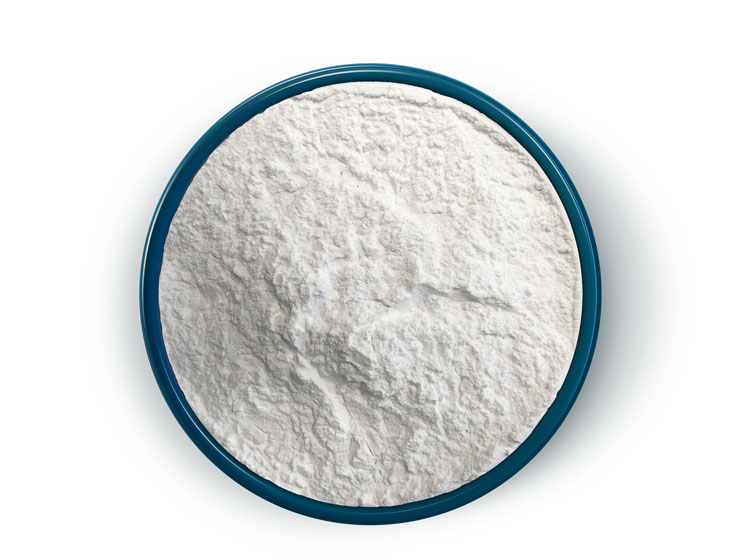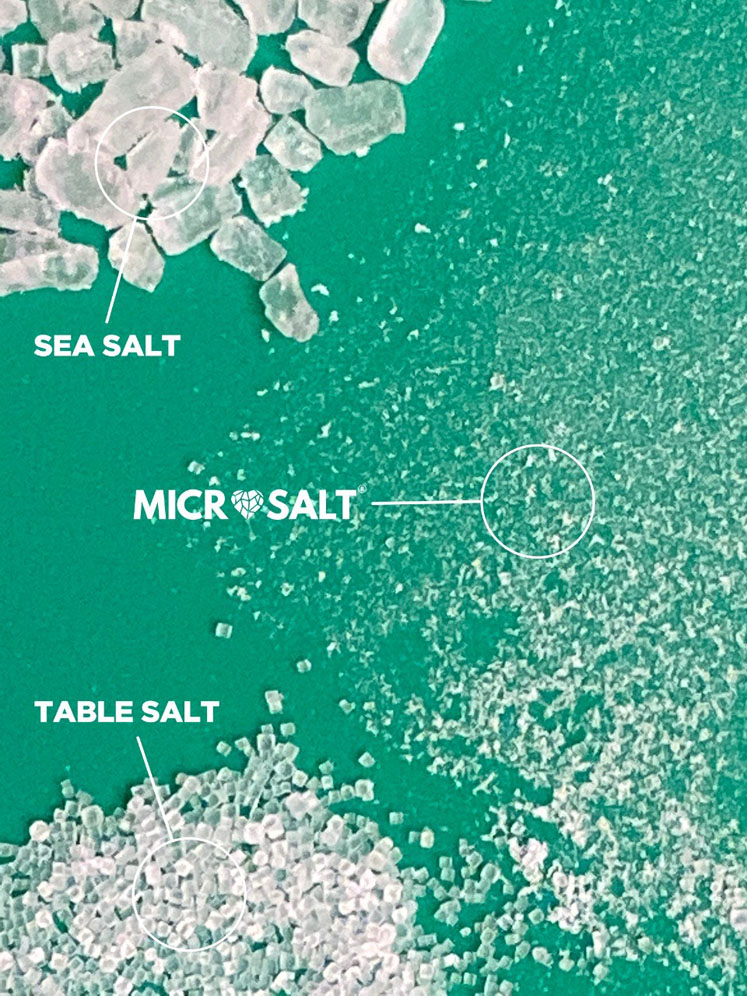In the land of salty snacks and comfort foods such as French fries and pizza, it is no secret that Americans love salt. But most of the salt that US consumers eat does not come from the salt grinder or shaker.
Sodium chloride, better known as table salt, plays a big role in the taste, safety and stability of many of the processed foods Americans enjoy. In fact, salt is a common ingredient that’s used to prepare commercially available food as well as being added to finished foods such as cooked meats, vegetables and snacks.
Most Americans don’t even realise they are consuming so much salt. Taste is one of the main drivers of food purchasing … and salt enhances flavour.
But, unfortunately, the relationship between American consumers and salt — albeit tasty — is not mutually beneficial. Although the human body may require a small amount of salt for electrolyte balance and other physiological processes, in many cases people ingest sodium at levels that can be deleterious to their health.1
In America, average daily sodium consumption is around 3400 mg, whereas Federal guidelines, such as the 2015–2020 Dietary Guidelines, recommend less than 2300 mg for the general population.2 Those who consume higher amounts of sodium are at greater risk of high blood pressure, which can cause a heart attack or stroke.3
The American Heart Association estimates that reducing current sodium intakes by 1200 mg a day could prevent between 44,000 and 92,000 deaths per year and save between US$10 and $24 billion annually in healthcare costs.4
All of the above essentially means that the majority of adults could benefit from sodium reduction.5 According to the Centers for Disease Control and Prevention (CDC), Americans get 71% of their daily sodium from processed and restaurant foods.6

In a 2019 report on Dietary Reference Intakes for Sodium and Potassium, a committee from the National Academies of Science, Engineering and Medicine concluded that: “For the desired public health benefit of reduced sodium intake to be achieved, more attention must be paid by industry to reducing sodium in the food supply and by consumers who have the needed sodium content information and an understanding of how to make health-inspired food choices.”7 The target of sodium reduction efforts has shifted from the consumer to the food industry.
Food companies working toward a solution
Food companies have responded to the need to reduce sodium. For years, the food industry has worked to gradually lower the amount of salt in their products. Companies such as Mars, H.J. Heinz Co., Kraft Foods Inc. and Starbucks have made public commitments to reduce sodium across multiple product lines.8
Additionally, companies are teaming up with the American Heart Association, CDC and US Food and Drug Administration (FDA) to kick start these efforts.9 In 2016, the Grocery Manufacturers Association (GMA), an industry association of consumer packaged goods companies, cited that the food industry voluntarily reformulated thousands of products to reduce their sodium content, when possible, to be consistent with consumer expectations.10
However, companies face challenges as they reformulate products to reduce or remove salt. It is often hard to find a similarly dynamic ingredient in terms of flavour, function and safety.11 But, growing demand for sodium reduction and changes in consumer buying habits are encouraging manufactures to try new technologies to address this concern.
Classic substitutes for salt, such as potassium chloride, are often more expensive and have a detectably different taste. Additionally, consumers do not often understand complex chemical sounding names (such as potassium chloride).12
The bottom line is this: Americans like their salt and don’t want to give it up or lose the taste profiles of the products they have come to love, making it very difficult for companies to make as much progress as the public health community desires.
US government takes action
A 2019, a study published in The American Journal of Medicine showed that sodium intake since 1999 has remained above recommended levels for all segments of the adult population. National Health and Nutrition Examination Survey (NHANES) data was analysed from 1999–2016 and results showed that median sodium consumption actually increased slightly during that period, going from 3156 mg per day in 1999–2000 to 3232 mg in 2016.
The authors concluded that “adherence to guidelines is poor” and novel interventions are needed to reduce sodium intake.13
To address this lack of progress, governments have stepped in. In 2009, the NYC Health Department launched The National Salt Reduction Initiative (NSRI), a partnership of about 100 health organisations and authorities who committed to working with the food industry to voluntarily lower the amount of sodium found in packaged and restaurant foods.14
The targets spanned packaged and restaurant food categories with the goal of reducing sodium in these products by 25% in five years. Between 2009 and 2014, there was a 6.8% reduction in sodium levels in the US food supply, as processed food companies and restaurants made commitments to reduce sodium across product lines.

Figure 1: Comparative sizes of sea salt, table salt and Microsalt crystals
Building on these efforts, in June 2016, the FDA issued draft industry guidance to establish voluntary short- and long-term goals for companies to reduce total sodium content in their products. The aim of the guidance was to help Americans achieve the dietary guideline-recommended sodium levels by encouraging food manufacturers, restaurants and food service operations to reduce sodium in foods.
The FDA approached this challenge with targets that addressed sodium reduction incrementally, allowing companies time to reformulate products to reduce sodium and for consumer taste to adjust to these reduced sodium options. The goal is not only to reduce sodium in existing products, but also to support new and innovative product development such as new salt substitutes.15
These are laudable goals; but, to get there, we need more and better options to provide food that tastes good and is lower in sodium.
Microsalt: tiny salt, big mission
Efforts are under way to improve and expand available options. The FDA recently published a draft proposal that attempts to simplify the name of potassium chloride to potassium chloride salt, hoping that consumers will be more comfortable seeing that on a label.
Another example of a simple yet novel approach to sodium reduction is Microsalt, a patented technology that achieves the same flavour as traditional salt with as little as half the sodium.16 This is achievable because Microsalt is roughly 100 times smaller than a regular salt particle (Figure 1).
Microsalt is suitable for dry applications, such as chips, nuts, crackers, popcorn, etc., and, just like other salt products, it’s applied directly to the product. However, owing to the size of the nanoparticles, Microsalt dissolves almost immediately, delivering a higher sense of saltiness with less sodium.
Manufacturers have been able to reduce the sodium content in some foods by as much as 50% without adversely affecting its taste. With Microsalt, consumers don’t have to give up the taste they love to benefit from lower sodium and better health. Now, that’s a story worth telling … and a solution to the problem.
References
- https://bit.ly/2pPsTpL.
- www.fda.gov/food/food-additives-petitions/sodium-reduction.
- https://bit.ly/2NASwDx.
- https://newsarchive.heart.org/american-heart-association-launches-new-sodium-reduction-campaign.
- http://nationalacademies.org/hmd/Reports/2019/dietary-reference-intakes-sodium-potassium.aspx.
- www.cdc.gov/salt/index.htm.
- www.nap.edu/resource/25353/030519DRISodiumPotassium.pdf.
- www.cbsnews.com/news/16-food-companies-agree-to-reduce-salt.
- https://sodiumbreakup.heart.org/more-food-companies-leading-way-sodium-reduction.
- https://bit.ly/2CwdDAD.
- https://bit.ly/36R5qFa.
- https://bit.ly/34Lg2Dy.
- A. Brouillard, et al., “Trends in Dietary Sodium Intake in the US and Impact of USDA Guidelines: NHANES 1999-2016,” The American Journal of Medicine 132(10), 1199–1206 (2019).
- www1.nyc.gov/site/doh/health/health-topics/national-salt-sugar-reduction-initiative.page.
- www.fda.gov/regulatory-information/search-fda-guidance-documents/draft-guidance-industry-target-mean-and-upper-bound-concentrations-sodium-commercially-processed.
- https://salarius.co/product.




